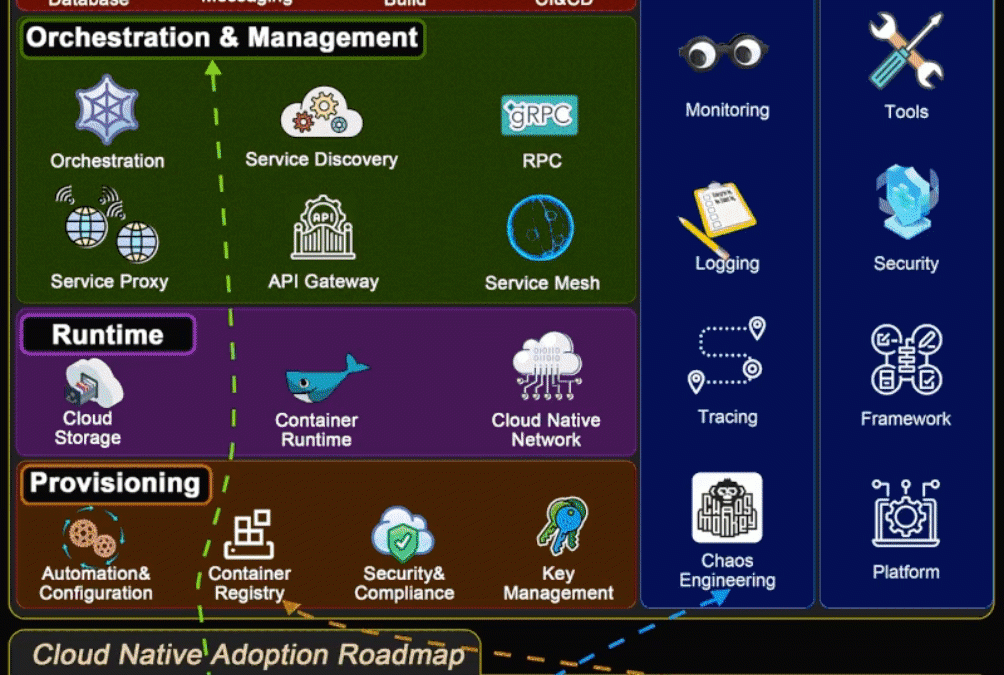Cloud & DevOps: Continuous Transformation
In today’s fast-paced digital landscape, the convergence of cloud computing and DevOps practices has become a cornerstone of modern IT operations. This article delves into the concept of continuous transformation, focusing on adopting cloud-native architecture within organizations. The diagram below serves as a blueprint for navigating this transformative journey.
Understanding the Action Spectrum
The action spectrum represents the various facets involved in adopting cloud-native architecture. Let’s explore each aspect in detail:
1. Application Definition Development
The first step towards cloud-native transformation is defining and developing applications that are inherently compatible with cloud environments. This involves leveraging microservices, containerization, and APIs to create modular, scalable, and agile applications.
2. Orchestration and Management
Orchestration and management are crucial elements in ensuring the seamless deployment and operation of cloud-native applications. Technologies like Kubernetes, Docker Swarm, and Apache Mesos play a vital role in orchestrating containers and managing resources efficiently.
3. Runtime
The runtime environment is where cloud-native applications execute and interact with underlying infrastructure. It encompasses runtime platforms, such as cloud providers (AWS, Azure, Google Cloud), PaaS (Platform as a Service) offerings, and serverless computing frameworks like AWS Lambda and Azure Functions.
4. Provisioning
Provisioning involves the automated allocation and management of resources required for running cloud-native applications. Infrastructure as Code (IaC) tools like Terraform, AWS CloudFormation, and Ansible facilitate provisioning by defining infrastructure components programmatically.
5. Observability
Observability is crucial for gaining insights into the performance, health, and behavior of cloud-native applications. Monitoring tools, logging frameworks, and distributed tracing platforms enable real-time visibility, troubleshooting, and optimization of application performance.
6. Serverless
Serverless computing represents a paradigm shift in cloud-native development, allowing developers to focus on code without managing underlying infrastructure. Serverless platforms handle scalability, resource allocation, and execution, leading to greater agility and cost efficiency.
Adoption Roadmap
The adoption roadmap visualizes the sequential progression of adopting cloud-native architecture within an organization. It begins with application definition development, followed by orchestration, runtime, provisioning, observability, and embracing serverless computing.
By following this roadmap, organizations can embark on a continuous transformation journey towards cloud-native excellence, leveraging the full potential of cloud technologies and DevOps practices to drive innovation, agility, and business value.
In conclusion, the fusion of cloud computing and DevOps paves the way for continuous transformation, empowering organizations to adapt, innovate, and thrive in a dynamic digital landscape. Embracing cloud-native architecture is not just a technological shift but a strategic imperative for staying competitive and delivering exceptional user experiences in today’s interconnected world.
Keep visiting QuickShare and write to us in the comments below.

